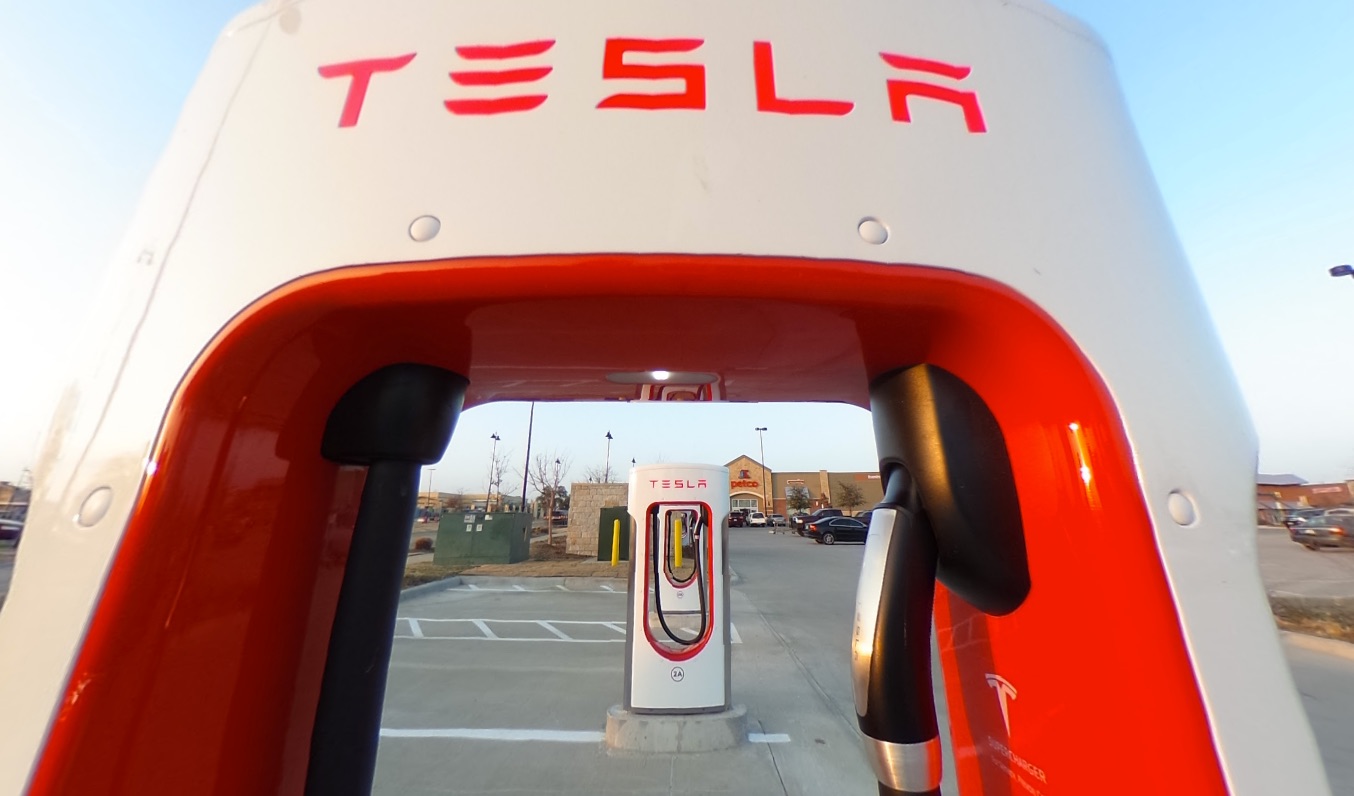
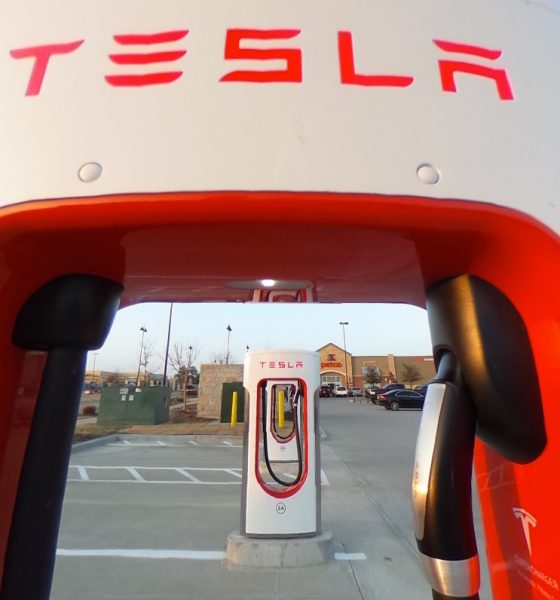
News
Tesla 62-stall Supercharger project in Santa Monica isn’t dead yet
Santa Monica, California City Councilmembers are still interested in Tesla’s 62-stall V3 Supercharger project. Apparently, there is still hope that the project could eventually happen in the future as long as the time and property availability line up with what would be Tesla’s largest V3 Supercharger station in the world.
After Tesla proposed a 62-stall V3 Supercharger site in Santa Monica in early March, the Santa Monica City Council voted 5-2 to approve the site that would bring the automaker’s fastest chargers to the coastal town located in Los Angeles. Santa Monica would officially become the home of the world’s largest V3 Supercharging lot, and LA-based owners were ecstatic regarding the possibilities. Along with the Superchargers, a small lounge would also be available for owners to use the restroom or hang out for a few minutes while their electric car gained some range.
However, just a few days after the site’s approval, the Santa Monica City Council met once again. They scrapped the project in favor of an Emergency Interim Zoning Ordinance that prioritized housing instead of electric vehicle chargers. The ordinance would temporarily reserve any available commercial property for potential housing development, including apartments and condominiums. The ordinance would last between 45 days and two years, depending on an extension process.
Tesla’s largest V3 Supercharger facility is coming to Santa Monica
Now, City Councilmembers indicate that Tesla could still open up the project eventually as long as the scenario is right. Councilmember Kevin McKeown said (via Santa Monica Daily Press):
I’ve already been working with City staff to see if we can get Tesla and the property owner to come back with such a project.”
Unfortunately for Tesla, the timing of the proposal was just off. There wasn’t really much that the automaker could do, especially as housing and reducing displacement remains a priority to the Santa Monica City Council. There are not enough housing options in the Santa Monica area. To prevent displacement of families living in currently-built complexes, the City Council decided that new buildings were the best option. Therefore, Tesla’s project took an unfortunate backseat to make way for new housing opportunities.
The proposed Supercharger location is a perfect location for new, appealing apartment complexes, McKeown added. “The Tesla site is at the intersection of major bus routes, with two bus stops, one on the boulevard and one on 14th Street. And while EV charging is a laudable amenity, one I have championed over the years, it could be done in a mixed-use format that provides housing as well,” the Councilmember said. “If we’d exempted their existing proposal from the temporary commercial-only moratorium, we might instead have had to swap into our Housing Element Suitable Sites Inventory other parcels where residents live currently. I’d prefer to both protect current residents from redevelopment of their homes for what would likely be less-affordable housing, albeit more of it, and provide EV charging in a format that makes wiser use of scarce land in a crucial location.”
Tesla employee Noelani Derrickson petitioned to have Tesla’s Supercharger project exempted from the Emergency Ordinance. Derrickson said Tesla has been working closely with the Santa Monica planning staff for over six months, highlighting the advantages a Supercharger station would have in the location that was proposed. The councilmember said, “Tesla has been working closely with Santa Monica planning staff for over half a year now on a Tesla electric vehicle fast-charging station that includes solar energy and battery storage within the mid-city neighborhood.”
Derrickson’s argument persuaded the fellow Councilmembers to unanimously vote on a temporary hold for commercial projects like Tesla’s Supercharging station and other automotive dealerships. This alone proves that the Supercharging facility may not be dead after all. It just may come a tad later than expected.

News
Tesla launches hiring for Robotaxi program in its twentieth country
Overall, the hiring signals Tesla’s aggressive timeline for global dominance in autonomous mobility.

Tesla has launched a hiring initiative for its Robotaxi program in its twentieth country, as the company posted two new jobs in Thailand this week.
Tesla is hiring in Bangkok and Kowloon for the Vehicle Operator position, which is related to data collection, and is the first in Thailand, but the twentieth country overall, as the company tries to expand into other markets.
🚨 BREAKING: Tesla is hiring additional full-time Vehicle Operators in Bangkok, Thailand.
Previous openings were 6-month, part-time roles. These are equivalent to AI Safety Operator roles in the U.S. pic.twitter.com/R6LzoU1bos— Tesla Yoda (@teslayoda) January 5, 2026
Tesla has had active job postings for Vehicle Operator positions in the United States, India, Israel, Taiwan, Germany, the Czech Republic, Hungary, the UK, Finland, Switzerland, Sweden, the Netherlands, Austria, Spain, Norway, Italy, and Turkey in past listings.
These postings are not all currently available, likely because the roles have been filled.
Thailand is the most recent, and broadens the company’s potential path to expanding its ride-hailing program, which is only active in the United States in Austin, Texas, and the California Bay Area, so far.
These roles typically involve data collection, which assists in improving Autopilot and Full Self-Driving operation. Tesla’s self-driving programs utilize real-world data that is accumulated and stored, observing vehicle and traffic behavior, as well as tendencies that are performed by human drivers to help increase safety and overall performance.
Overall, the hiring signals Tesla’s aggressive timeline for global dominance in autonomous mobility. Although the company has several high-profile rivals and competitors in the field, it has established itself as a main player and a leader in the development of autonomous technology, especially in the U.S., as its FSD suite is refined on almost a weekly basis.
The Full Self-Driving suite is available in seven countries and territories currently, including the U.S., Canada, China, Mexico, Puerto Rico, Australia, and New Zealand. Its biggest goal for expansion is currently the European market, where regulatory hurdles have been the main bottleneck prolonging its launch on the continent.
Tesla has performed months of testing in various European countries, including France and Spain, and does have support in some areas from various regulatory agencies. However, the company is hoping to get through this red tape and offer its suite in Europe for the first time, hopefully this year.
News
Tesla China rolls out Model Y upgrades, launches low-interest financing
These strategies are aimed at improving the ownership experience and keeping vehicle pricing competitive in the world’s largest electric vehicle market.
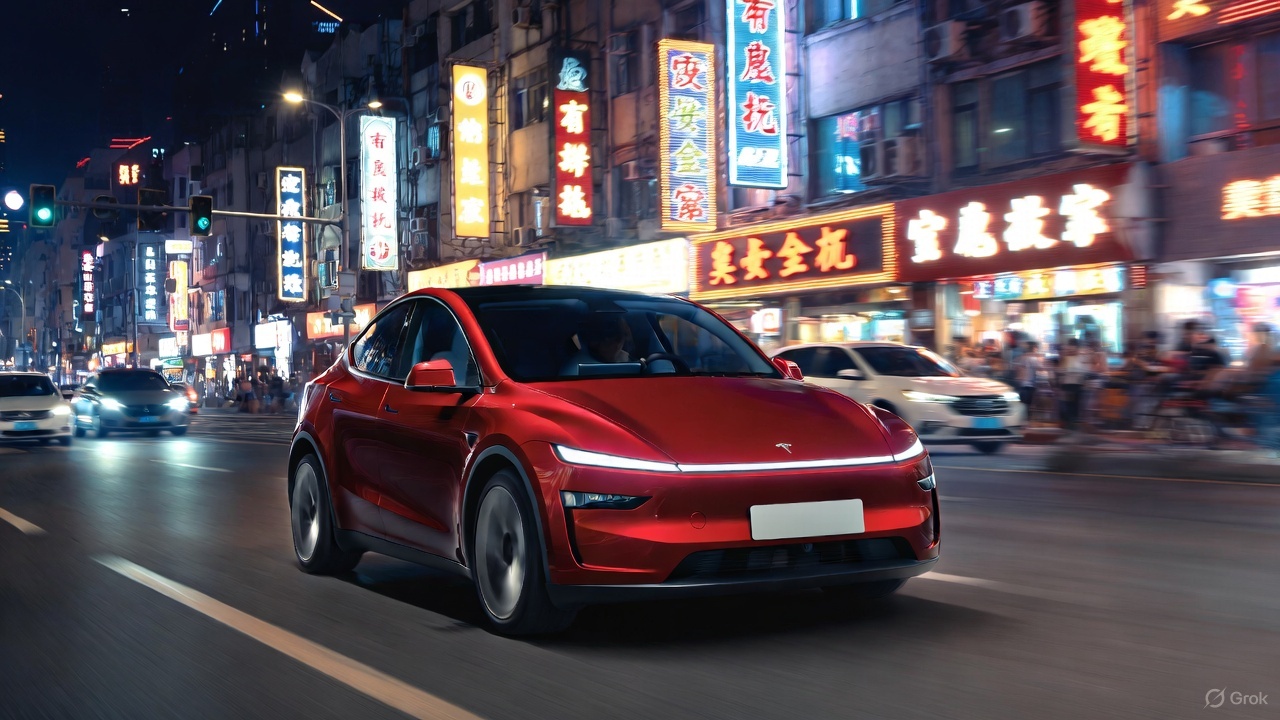
Tesla has rolled out minor updates to the five-seat Model Y in China, upgrading the vehicle’s center display to a higher-resolution 16-inch 2K screen. The electric vehicle maker also introduced attractive financing options, including 7-year low-interest rates, to offset the new purchase tax on EVs.
These strategies are aimed at improving the ownership experience and keeping vehicle pricing competitive in the world’s largest electric vehicle market.
Five-seat Model Y gets larger, better display
With its recent update, all three variants of the five-seat Model Y now feature an upgraded 16-inch 2K resolution center display, which replaces the vehicle’s previous 15.4-inch 1080p panel. This screen was already used in the six-seat Model Y L, and it offered improved visual clarity. Tesla China has also updated the Model Y’s headliner to black, giving the vehicle a sleeker appearance.
Prices of the five-seat Model Y remain unchanged at RMB 263,500, RMB 288,500, and RMB 313,500 for the respective trims. This update enhances the cabin experience as domestic rivals are already adopting high-resolution screens. As noted in a CNEV Post report, some domestic automakers have begun rolling out vehicles equipped with 3K-resolution displays.
New financing offers
Tesla also launched ultra-long-term financing offers for its locally produced models in China, which include the Model 3 sedan, the five-seat Model Y, and the six-seat Model Y L, through January 31, 2026. The 7-year option features an annualized fee rate as low as 0.5%, which is equivalent to 0.98% interest. This is expected to save customers up to RMB 33,479 ($4,790) compared to standard rates.
A 5-year zero-interest plan is also available, and it has been extended to the Tesla Model Y L for the first time. These incentives help offset China’s new 5% purchase tax on New Energy Vehicles (NEVs) in 2026-2027. Some of Tesla’s rivals in China have announced in recent months that they would be covering the purchase tax owed by buyers early this year.
News
Tesla Model Y’s new feature lands driver in hot water from police officer
“He gave me a warning and told me to get it fixed.”
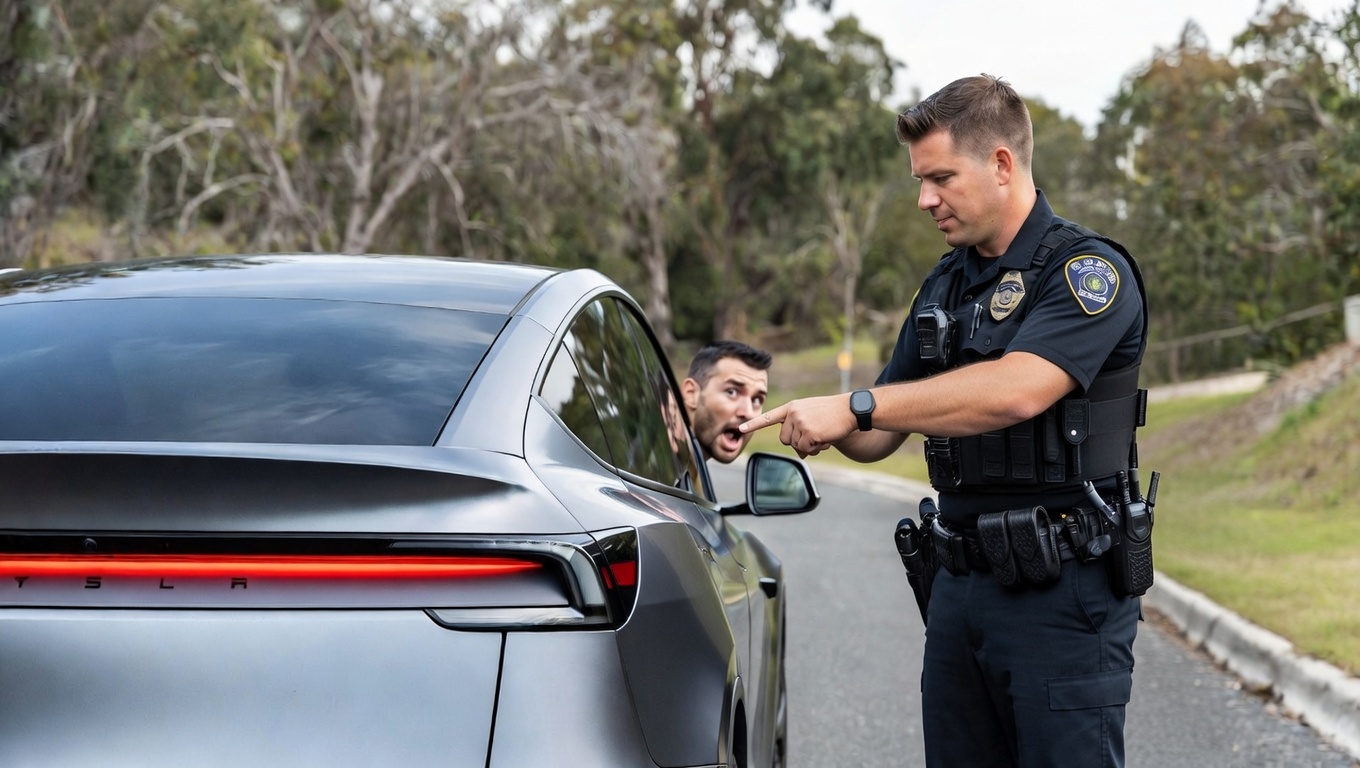
Tesla Model Y received a slew of both interior and exterior upgrades when the company refreshed its best-selling vehicle last year.
However, one of the more notable changes from an exterior perspective landed a driver in hot water with a local police officer, who was confused about the situation with the taillight bar and its ability to alert other drivers of a reduction in speed.
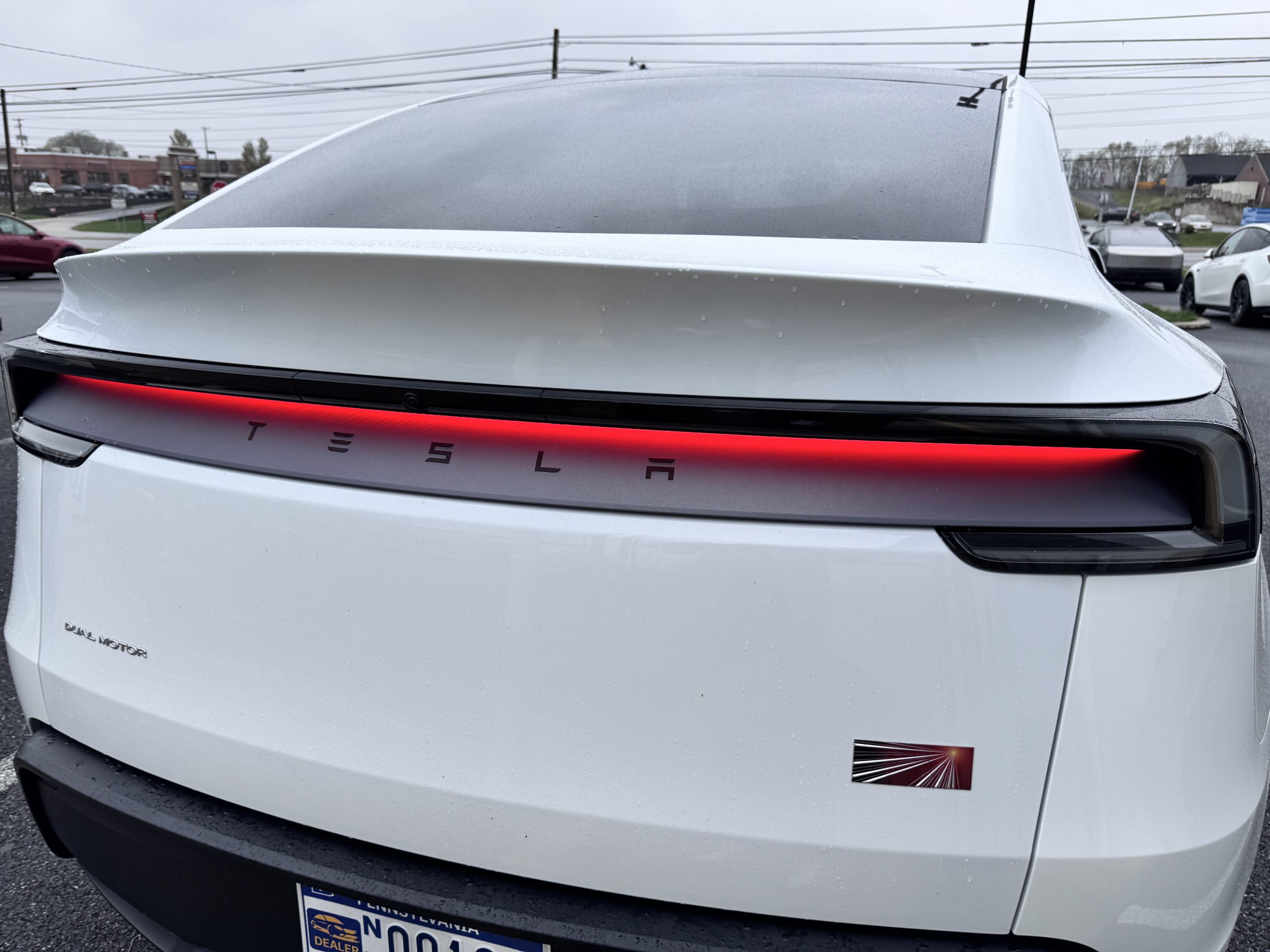
The new Tesla Model Y taillight with taillight glow
A Tesla Model Y owner in Indiana recently noted in a Facebook post that he was pulled over because a police officer thought the vehicle’s taillights were not turned on. However, the Model Y’s new rear light bar, which spans across the entire width of the vehicle, is more than visible in both light and dark conditions.
The incident, which was first spotted by Tesla Oracle, brings to light the interesting changes and perception of vehicle design that Tesla has brought forth with the new Model Y. We know some things might be head-scratching to some drivers, notably the Matrix Headlight technology present on the car, but this one truly baffled us.
The post stated:
“Just got pulled over for my tail lights not being “on” i told the officer it’s brand new. It has 1100 miles. I told him the red light bar is the taillight. The brake lights, both turn signals, and the red bar was on/worked. He told me that where the brake lights are, it should be illuminated there also. He gave me a warning and told me to get it fixed. Had anyone else had this kind of issue?”
Having the police officer tell a driver to “get it fixed” when it is a completely legal and functional design is pretty crazy.
However, the rear taillight bar, which glows and really gives the new Model Y a distinct difference between its previous iteration, is more than recognizable as a brake light and an indication of a reduction in speed.
Regulatory language for vehicle designs indicates that the light has to reach a certain number of lumens, or brightness. Lars Moravy indicated this on an episode of Jay Leno’s Garage when he and Tesla Chief Designer Franz von Holzhausen explained some of the details of the new Model Y.
This issue sparks some interesting dialogue people can have about vehicle design, and as more and more companies are adopting these futuristic looks, it seems law enforcement will have to get with the times and familiarize themselves with the regulations regarding exterior lights.








